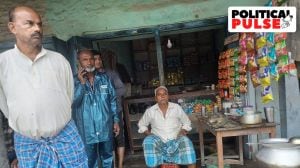Stay updated with the latest - Click here to follow us on Instagram
Surat textile mill owners jump on real estate bandwagon
Hard times loom over textile industry in Surat as dyeing is fast becoming a dying business.
Hard times loom over textile industry in Surat as dyeing is fast becoming a dying business. While four textile processing units shut shop in the city in the last fortnight,80 such units have gone out of business in the last two years. Thin profit margins,hike in prices of raw materials and poor demand have spelt death knell for the traditional textile dyeing units in the district,also known for diamonds. But textiles loss is realtys gain as more and more textile mill owners,lured by huge profits and a risk-free profession,are jumping on the real estate bandwagon.
Manoj Agarwal,in his fifties,shut down two of the three dyeing and processing units that he owns and operates in Surat city a couple of months back. He has ventured into real estate business in which,he feels,the risks are few and far between.
There is a vast difference between textile and real estate business. For the sake of our brand,we have continued operating one of the dyeing house. However,we are concentrating more on our real estate business, says Agarwal,who started his realty business a few months ago. It is difficult to survive in textile business. We could not find buyers for second-hand textile machinery and so we had to scrap it. In comparison,real estate is stress free and we hope to get good returns by investing in land, says Agarwal. Hike in prices of power,natural gas and other raw materials have caused profit margins to thin in textile industry.
Southern Gujarat Textile Processing Association (SGTPA) president Jitu Vakharia said,In the last two years,over 84 dyeing and processing units have shut down. This year,the figure might rise. The main reason behind such a critical situation is that the weaker players are failing to combat the changes in the economy.
Official sources said there were approximately 375 textile mills currently operating in Surat city. Most processing factories that closed down were operating in areas like Ashwanikumar Road,Vastadevdi Road,Majura Gate and Sagrampura. The textile industry was earlier making profits,but for the last few years the profit margins have declined, says Pramod Choudhary,veteran dyeing and printing house owner.
Official sources said around 5,000-10,000 square metres of land was required to start a dyeing and printing house with a minimum investment of Rs 25 crore. Around four years ago,the dyeing houses were getting natural gas Surat textile mill owners jump on real estate bandwagon at Rs 9.20 per standard cubic metre,but now the gas prices have gone up to Rs 34.69 per standard cubic metre. The labour charges have gone up from Rs 300 per labour to Rs 500. Similarly,electricity charges have shot up from Rs 4.50 to Rs 7.00 per kilo watt. The prices of coal,dyes and chemicals saw 20 per cent rise in prices.
Changing trends in fashion is also seen to be behind this slump. The production of sarees is a major business. But there has been a 7-8 per cent dip in this business as the younger generation have started opting for dress materials instead of sarees, says Vishal Budhia,secretary of SGTPA. The owners of textile processing units who failed to survive in the business have invested money in real estate or have opted for textile trading, Budhia said. Real estate experts,however,believe that realty is not that risk-free. Many builders of Surat city have started partnering with textile businessmen. However,those joining real estate business may also have to bear losses as they invest money at different places, said a noted builder in Surat city on conditions of anonymity.







